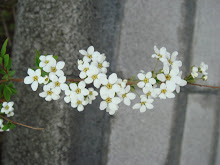Hmm.. this post, I am going to write about onsen 温泉- japanese hotspring!... nothing much to do with the language ... but culture?? ;0)
Onsen! Oh, I love going to onsen!! It is so nice.. not sure what is nice .. probably the fact that I am naked (when do you have the chance to do that and no one really cares about how you look!!) and can dip in the hotspring... and the hotspring is therapeutic for me!! ;0)
My first experience was pretty self conscious and after a few rounds, I am more or less settled into the routine and so I am truly enjoying the process indeed...! I have been to many hotsprings in Kyushu and now in Hokkaido. The cheapest one I stepped into is Yen100 and the most expensive so far is Yen1000. For the cheaper ones, usually they do not provide the towel and toiletries so you will have to bring your own.
What do you do when you stepped into a hotspring? Well, when you enter the place, you have to remove your shoes and put into the locker provided. Pay the necessary fees at counter or some places have vending machines to pay your fees so you have to pay the fees @ vending machine first. Then, proceed to the bath area.
At the bath area, you will have to remove your clothes and usually there is usually a basket or locker to place your items. Then, proceed to the hotspring area - you will have to bath yourself first before you go into the hotspring.
The temperature is hot!! really hot! most that i go to, the temperature is about 40-44 degrees!! I will usually take about 5mins or so, starting with my legs, before I can fully dip myself into the hotspring....
Some places have open bath areas - it would be nice if there is a nice view to boot! But most that I go to, do not really have a nice view except for one in Kyushu.. that was really nice... the hotspring is up in the mountain....the colour of the hotspring is also a bit bluish...nice view of the place too... wow, so nice... just recalling it...

This is the cheapest onsen that I went to in Kyushu - only Yen100!! cheap isn't it? It doesn't have much facilities - not even proper bathing facilities... you basically bathe using the hotspring water which is very very very hot!!

This is one of the small hotspring in the ryokan that I stayed in Beppu, Kyushu. Really hot!!! I cant even bring myself to dip fully into the hotspring - only my toes got in!! ;0)









